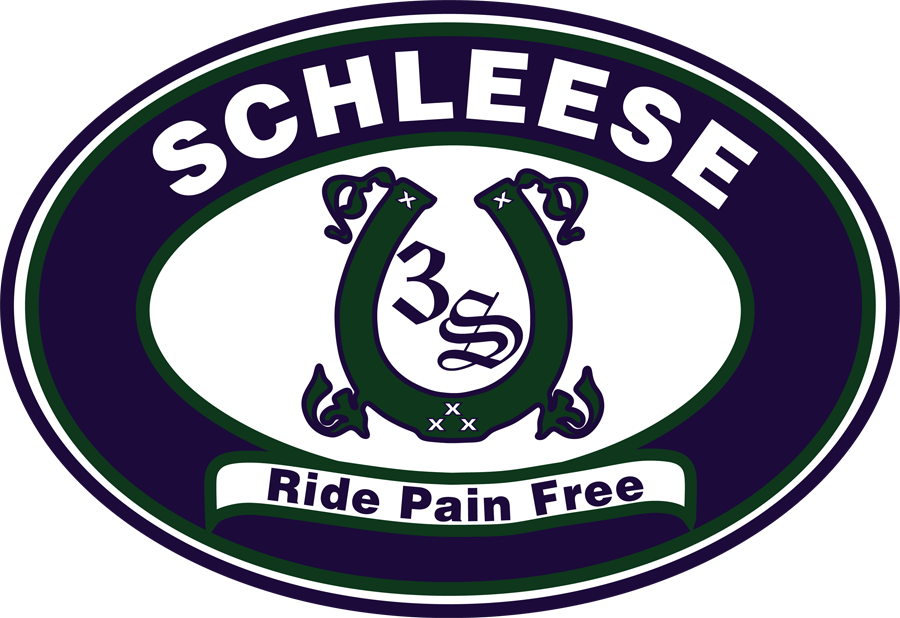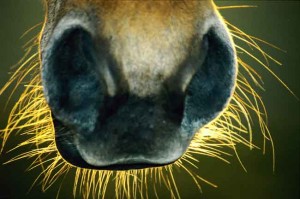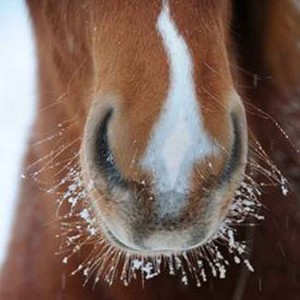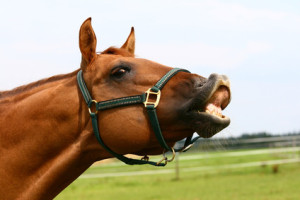
The Sense of Touch
By Jochen Schleese, CMS, CSFT, CSE ©Saddlefit 4 Life®2015. All Rights Reserved
Q: Is it alright to shave my horse’s whiskers off? 

A: No. This really isn’t okay at all – for the following reasons, with thanks to Wikipedia and Paul McGreavy as references. Whiskers or vibrissae are actually a type of mammalian hair that are typically larger in size than normal hairs, have a large and well-innervated hair follicle, and have an identifiable representation in the somatosensory cortex of the brain.
They are specialized especially for tactile sensing (while any type of hair has more crude tactile sensors.
Horses use their lips and whiskers to explore and identify things. A horse’s brain contains cells that receive information from these whiskers. Each time the horses’ whiskers touch something, the nerves fire off an electrical impulse to the brain to help determine what it is that is being touched. Horses breathe through their noses. When a horse curls its top lip up to help in smelling something, it’s known as “Flehmen”. This happens when the nose traps pheromonal scents in the vomeronasal organs so they can be analysed more closely. Horse’s upper lips are prehensile – which means they can be used for grasping, touching or feeling something. Horses cannot see right below their noses because of the position of their eyes, which means that they use their whiskers to help them determine edible objects and stay away from hazardous ones.
breathe through their noses. When a horse curls its top lip up to help in smelling something, it’s known as “Flehmen”. This happens when the nose traps pheromonal scents in the vomeronasal organs so they can be analysed more closely. Horse’s upper lips are prehensile – which means they can be used for grasping, touching or feeling something. Horses cannot see right below their noses because of the position of their eyes, which means that they use their whiskers to help them determine edible objects and stay away from hazardous ones.
If you remove these sensory organs, it is almost as though you were cutting off your fingertips. You would lose all sense of touch. I hope people will reconsider their personal vanities and do what’s right for the horse.



